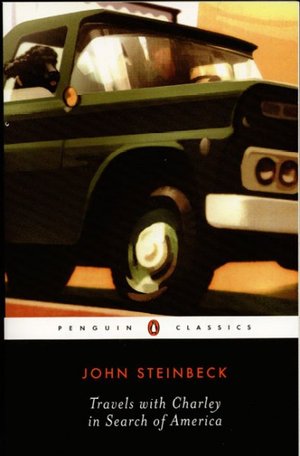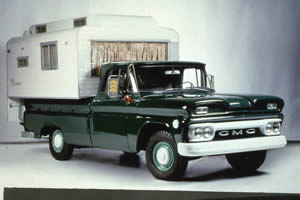Does the dog die?
This is the first question I asked my husband when he recommended this book to me. The answer is no, and it won’t spoil the book for you. I needed to know this fact before I started because I wouldn’t have read it if he did. I know, it’s a stupid reason not to read a book, but it’s how I am. And no, I’ve never read or seen Marley and Me (and I never will).
This book is excellent. I’ve read Steinbeck’s major novels (Grapes of Wrath, East of Eden, Of Mice and Men) and loved them all. This was a different kind of book, and one that I’m glad I read. I felt like I got to know Steinbeck. Often, it read as though he was thinking aloud about the things and places he saw. It always adds dimension to an author when you are able to read something autobiographical by him or her. Steinbeck’s traveling companion, Charley, a Standard Poodle, provides another great perspective on the journey.
The book begins with an older Steinbeck preparing to take a trip across America; he feels out of touch with the people he writes about and he wants to feel the pulse of the country again. Steinbeck decides that he will make the trip by camper, since he wants to meet people in their natural state. He doesn’t want to interfere with them so t he must be “a kinds of casual turtle carrying his house on his back.” He accomplishes this turtle-ness by purchasing a truck with a camper built into the bed. He names it Rocinante. The Quixote reference adds an interesting dimension to the book and it made me smile.
Now for an extremely brief summary of the book: Steinbeck spends what seems like a lot of time travelling from New York to Chicago (nearly 100 pages of 210). After Chicago, Steinbeck visits Montana and Wyoming (most notably) on his way to the west coast. Really beautiful descriptions of the land! Then, it’s on to California and Steinbeck’s hometown of Salinas. He spends only a little time here, feeling as though he no longer belongs in his hometown. He moves on through the Mojave desert and his next significant stop along the way is Texas. Steinbeck calls it a “state of mind” and an “obsession”; he spends little time on the land itself, but more on the people of Texas and their fierce sense of nationalism. As a Texan, I enjoyed this part of the book and his treatment of my home state 🙂 After a happy stop at a friend’s ranch, he heads to New Orleans, where he wants to witness the horrific racial tension caused by the desegregation of the public schools. This part of the book made me sob. Steinbeck speeds back home after this, eager to see his wife, sleep in his own bed, and be in his own home.
This book is definitely worth the read!

